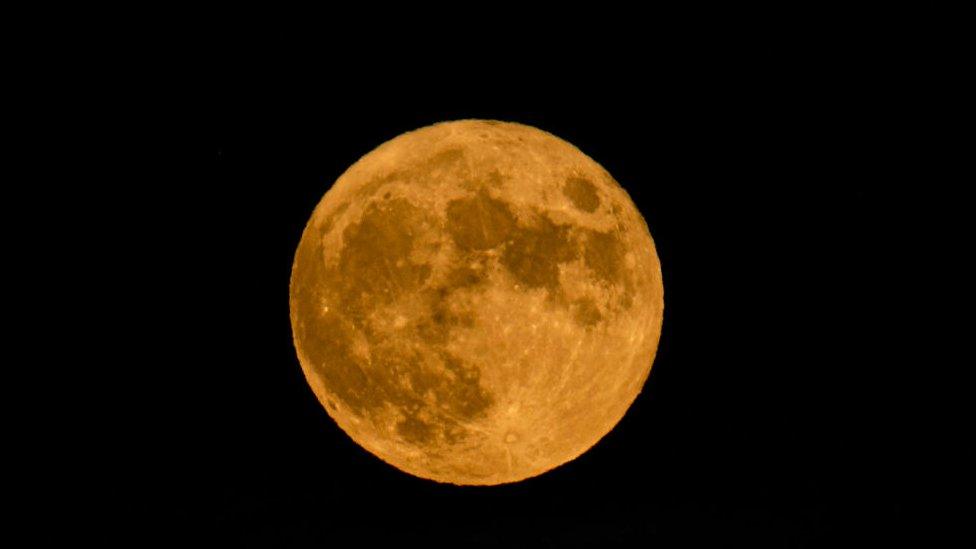October Stargazing: What's in the sky this month?
- Published

The Hunter's Moon rose in the sky as the sun set on Sunday 9 October and and it shined brightly during the night and the morning of Monday 10 October. The Hunter's Moon is the next full moon after the Harvest Moon takes place and it gets its name from a time of the year when people would traditionally be hunting animals for food ahead of the long and cold winter months. Did you spot it glowing in the sky this morning or over the weekend?
October's first meteor shower was the Draconid meteor shower, or the Draconids. These shooting stars were seen around the weekend of 8-9 October. They're named after the constellation Draco - meaning the Dragon - just like your favourite Harry Potter baddy Draco Malfoy! Meteor showers happen when a small piece of rock from an asteroid or a comet burns up entering the Earth's atmosphere which creates a glowing line of light in the sky. The Draconids are created by comet 21 P/ Giacobini-Zinner. Dark and clear skies are always the best conditions to see them.
October is thought to be the best time to get a view of the planet Mercury - the smallest planet in our solar system, but the one that's closest to the Sun. Around the first half of this month, Mercury will be at its point furthest from the Sun and at its highest point too. However, to catch a glimpse you'll have to get up pretty early - before sunrise!
The giant planets Jupiter and Saturn can be seen throughout the night this month. But how can you tell if you've seen a star or planet? Well if you see a steady light, that's more than likely to be a planet shining in the sky, whereas a star will twinkle. Early in the evening, you'll find these planets towards the southeast. They then move west with the stars over the course of the night. They'll form a triangle with another bright star called Fomalhaut.
Keep your eyes peeled on the night of the 21 October or early morning of 22 October, because you might notice some shooting stars - the Orionids meteor shower. The Orionids are thought to be one of the most beautiful meteor shows of the year. They peak every year around the middle of October and are known for their brightness and their speed. These meteors are fast; they travel at about 148,000 mph and are formed from Halley's Comet. When Orionids happen, they are often surrounded by some of the brightest stars in the sky, which makes the showers even more spectacular to see.
Just six days before Halloween on the 25 October, the Sun will appear as if someone or something has taken a bite out of it... as the Moon passes in front of the Sun! The Moon's shadow can be spotted as it creates a partial solar eclipse. People will be able to see this in the sky in Africa, Asia, Europe, and Guernsey in the UK and it will be most clear in the North Pole and Russia.
